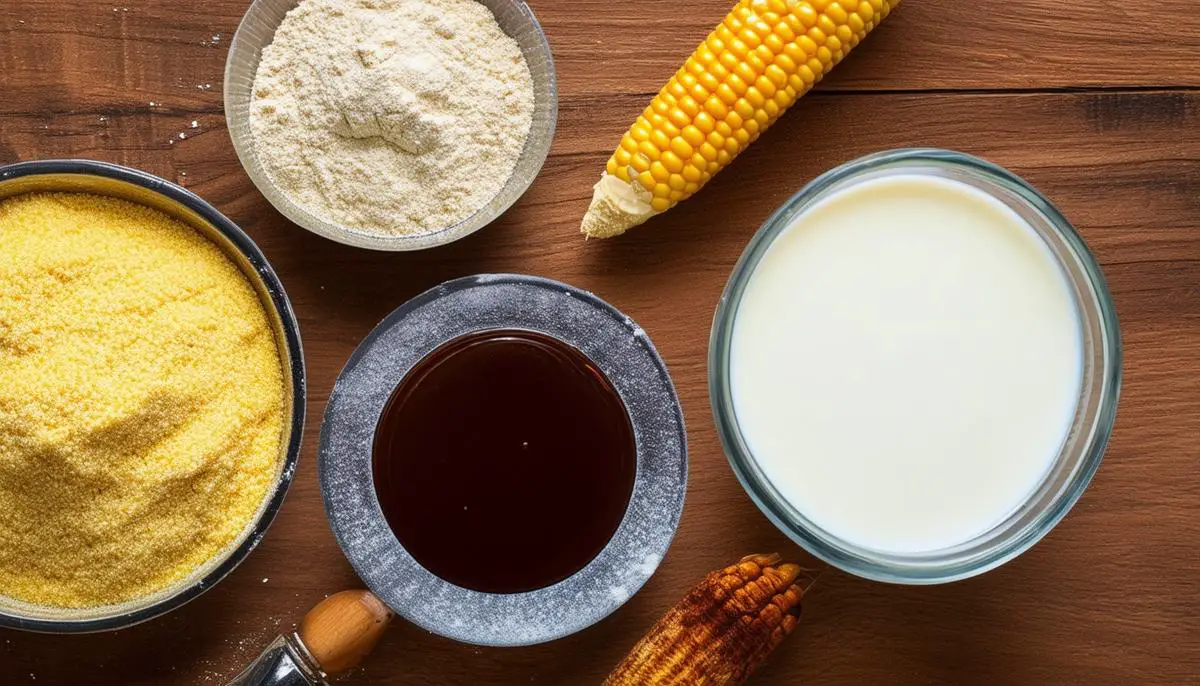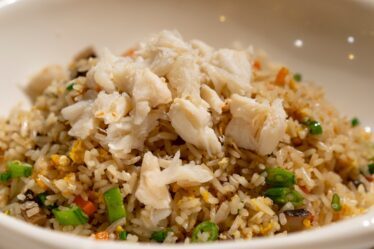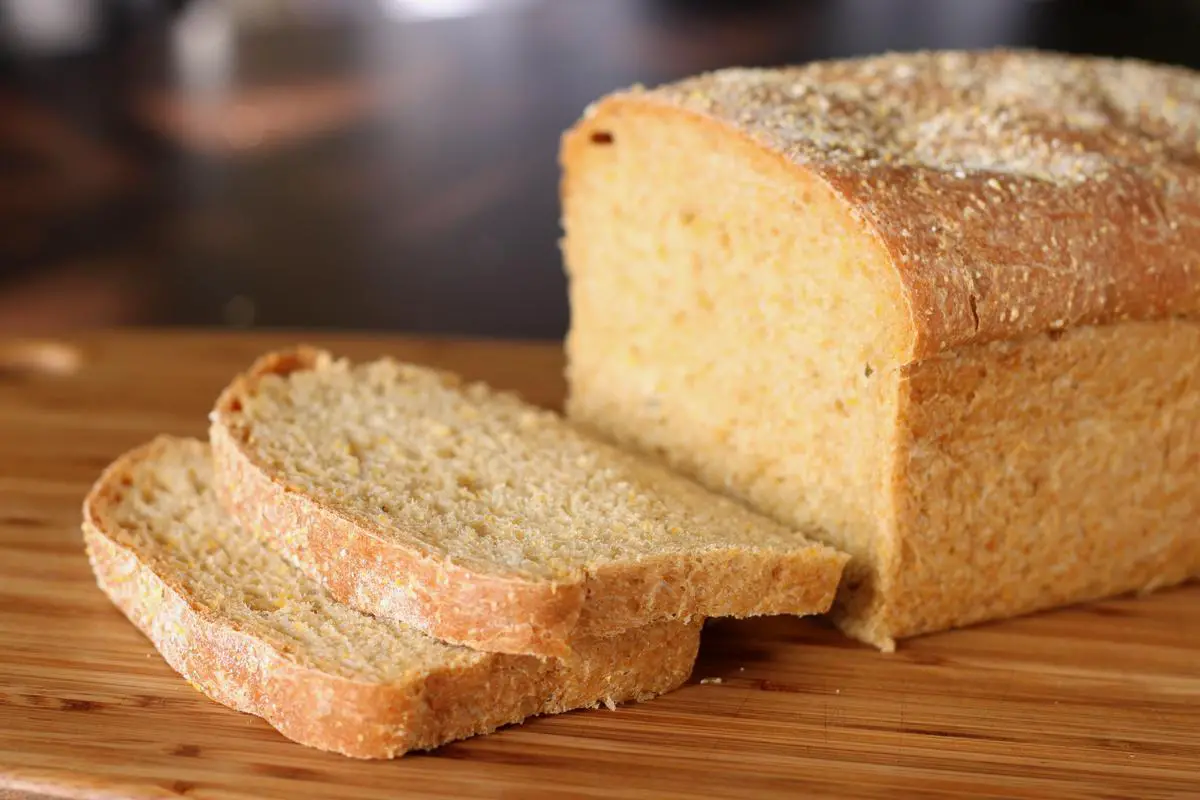
Introduction to Anadama Bread
With roots embedded in the fishing villages of Massachusetts, Anadama bread comes with a quirky backstory. Legend has it that a fisherman, frustrated with his monotonous diet of cornmeal porridge made by his wife, Anna, decided to spice things up. While muttering "Anna, damn her," he tossed in some molasses and flour, threw it in the oven, and voila, Anadama bread was born. Whether or not that's true, it's a story that adds a sprinkle of charm to every loaf we bake.
The core ingredients of Anadama bread are what set it apart. The addition of cornmeal gives the bread a slightly gritty texture, perfect for contrasting the subtle sweetness of molasses. Molasses adds a dark, rich flavor that you don't find in most everyday bread. Baking this loaf transports me to a cozy New England kitchen, where the winters are long and the comfort food is absolutely necessary for survival.
The cultural significance of Anadama bread stretches beyond its humble ingredients. It's a bread that tells a story, a culinary heirloom passed down through generations. It's the kind of bread you'd pack for a picnic or serve alongside a bowl of hearty soup. And though it sounds quaint and old-fashioned, the flavor is anything but. The combination of cornmeal and molasses creates a balanced taste profile—sweet but not sugary, substantial but not heavy.
To make a loaf is to participate in a small tradition, connecting with the past while creating something deliciously relevant for today. It's a versatile loaf, capable of being the star in a humble breakfast or an elegant dinner. So, whether you're a seasoned baker or someone looking to try something new, Anadama bread is a worthy addition to your kitchen repertoire. Trust me, it's one of those culinary experiences that comes with a side of nostalgia and a whole lot of flavor.
Flavor and Texture
The distinctive flavor and texture of Anadama bread truly set it apart from your run-of-the-mill loaf. Molasses infuses the bread with a deep, rich sweetness that lingers on the palate but doesn't overwhelm. It's not the sugary sweetness you get from brioche or challah; it's more grounded and complex, a subtle sweetness that complements the hearty body of the bread.
Cornmeal plays a significant role too, bringing a slightly gritty texture that contrasts beautifully with the soft, tender crumb. It gives the bread an earthiness that rounds out the molasses, creating a flavor profile that's both robust and homely. This combination makes each bite a satisfying experience, the kind that sticks with you in the best possible way.
This bread's versatility is another aspect that won me over. Toasted with a bit of butter, it makes a perfect breakfast treat. For lunches, it's sturdy enough to hold up as sandwich bread without falling apart, whether you're piling on deli meats or just slapping on some peanut butter. And let's not forget its role as a companion to soups; its hearty texture makes it ideal for dipping, soaking up all those wonderful flavors without turning to mush.
The mix of cornmeal and molasses in every slice offers a wholesome satisfaction that's hard to find in more refined, commercial breads. It's like a culinary handshake from the past, connecting us to a time when bread was a simple yet essential part of daily life. In every loaf, there's a story, a flavor, and a texture that delights and satisfies. So if you're looking to add a touch of New England charm to your kitchen, Anadama bread might be just the hearty, sweet addition you need.
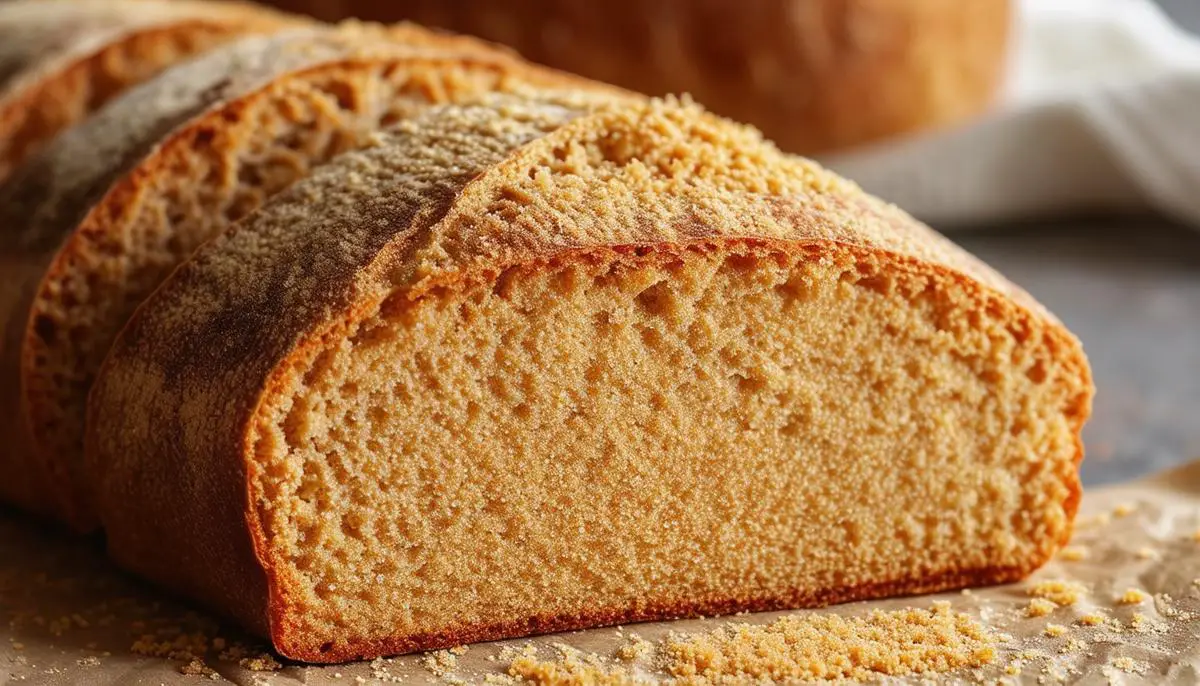
Core Ingredients
Anadama bread's flavor and texture hinge on a handful of straightforward yet essential components. Each of these core ingredients plays a pivotal role in creating the bread's distinctive taste and structure.
- Cornmeal: This is what gives Anadama bread its slightly gritty, rustic texture. When whisked into warm milk or water, cornmeal helps to thicken the mixture and add body to the dough. It's crucial in achieving that unique chew and earthy flavor that sets this bread apart from others.
- Molasses: Known for its dark and rich sweetness, molasses adds depth to the bread without making it overly sugary. It complements the cornmeal's texture beautifully, creating a balanced, complex flavor profile. Molasses also imbues the loaf with its characteristic dark color.
- Butter (or Alternative Fats): Butter adds a subtle richness and tenderness to the bread. However, some recipes use shortening instead, which can result in a slightly different texture—perhaps a bit lighter but still flavorful. The key is ensuring the fat integrates well with the other ingredients to enhance the bread's overall texture.
- Flour: Bread flour is often recommended for Anadama bread as it has a higher protein content, which supports better gluten development. However, all-purpose flour can also be used if that's what you have on hand. The flour partners with the cornmeal to give the bread its structure and chew.
- Salt: A common but crucial ingredient, salt enhances all the other flavors in the bread. It also helps to control yeast activity during fermentation, ensuring a balanced rise and preventing the dough from becoming overly puffed or collapsing.
- Yeast: The leavening agent that makes the bread rise, yeast is essential for creating that airy, tender crumb. Whether you use instant yeast or active dry yeast, the key is ensuring it activates properly, so your loaf rises beautifully.
- Liquids (Milk, Water, or Alternative Milks): Most Anadama bread recipes call for some combination of milk and water. Milk adds richness and aids in creating a softer crumb, while water helps to hydrate the flour and cornmeal. Some modern takes on the recipe suggest using alternative milks like almond or oat milk, especially if you're looking for a dairy-free version. Each liquid option can subtly shift the bread's flavor and texture, but all aim at achieving that quintessential balance of chew and tenderness.
Variations in these ingredients can lead to slight differences in the bread's final taste and texture, making Anadama bread a flexible canvas for your personal preferences. Whether you're sticking to a traditional approach or adding a modern twist, these core ingredients ensure every loaf is a nod to New England's beloved classic.
Preparation and Cooking Tips
When making Anadama bread, the little details make a big difference. First off, mixing the cornmeal with the boiling water is crucial. You want to make sure the cornmeal blends smoothly to avoid lumps that could ruin your bread's texture. Here's a trick: whisk the cornmeal continuously as you pour in the boiling water. If you notice any larger lumps, press them down with a spatula to break them up. The mixture will look somewhat lumpy, but that's okay—just avoid any substantial clumps.
Timing is everything in bread making, and Anadama bread is no exception. From initial mixing to the multiple rises, patience is essential. One of the most important steps is allowing the dough to rise properly. After mixing your dough, let it rest in a warm place for anywhere between 60 to 90 minutes, or until it doubles in size. If it's winter and your kitchen is on the cooler side, consider setting the dough bowl on a folded newspaper atop a radiator, or use your oven as a makeshift proofing box by warming it to 200°F and turning it off for about 10 minutes before placing the covered dough inside.
The second rise is equally important. After shaping the dough, let it rise in the loaf pan until it crests above the edge of the pan. This usually takes about 60 to 90 minutes. Rushing this will result in dense bread, which you definitely want to avoid.
Incorporating butter while the mixture is still warm is another key tip. This helps the butter blend seamlessly, ensuring even distribution throughout the dough. Once you've heated your milk and butter mixture and whisked in the cornmeal, add the molasses and salt. Let this mixture cool down to lukewarm temperature before you proceed with adding the yeast and flour.
Whether you're using a stand mixer or kneading by hand, the technique matters. If you're going the stand mixer route, make sure to use the dough hook attachment and start at a low speed until the dough comes together. Then, mix on medium speed for about 10 minutes. If hand kneading, do so vigorously on a lightly floured surface for around 5 minutes. The dough should be smooth and elastic.
Finding the right environment for your dough to rise is half the battle. In summer, almost any spot in the kitchen will do. However, during colder months, get a bit creative. Utilizing a pre-warmed oven is an excellent strategy. Just remember to turn the oven off after warming and allow it to cool slightly before placing the dough inside.
Considering different equipment, if you don't have a stand mixer, fear not. Hand kneading works just as well; it just requires more elbow grease. Knead the dough on a floured surface, adding flour as needed to prevent sticking.
Finally, before baking, place a bread pan filled with about 2 cups of boiled water on the lowest oven rack. This creates a steamy environment that helps the bread develop a lovely crust and soft interior. Don't forget to brush the top of your loaf with melted butter and, if you like, sprinkle a little cornmeal over it for added texture.
By paying attention to these details, your Anadama bread will turn out beautifully. Every loaf will carry that delicate balance of sweet and hearty flavors, making all the time and effort worthwhile. Enjoy the baking process, and even more so, relish the savory goodness that comes from your oven.
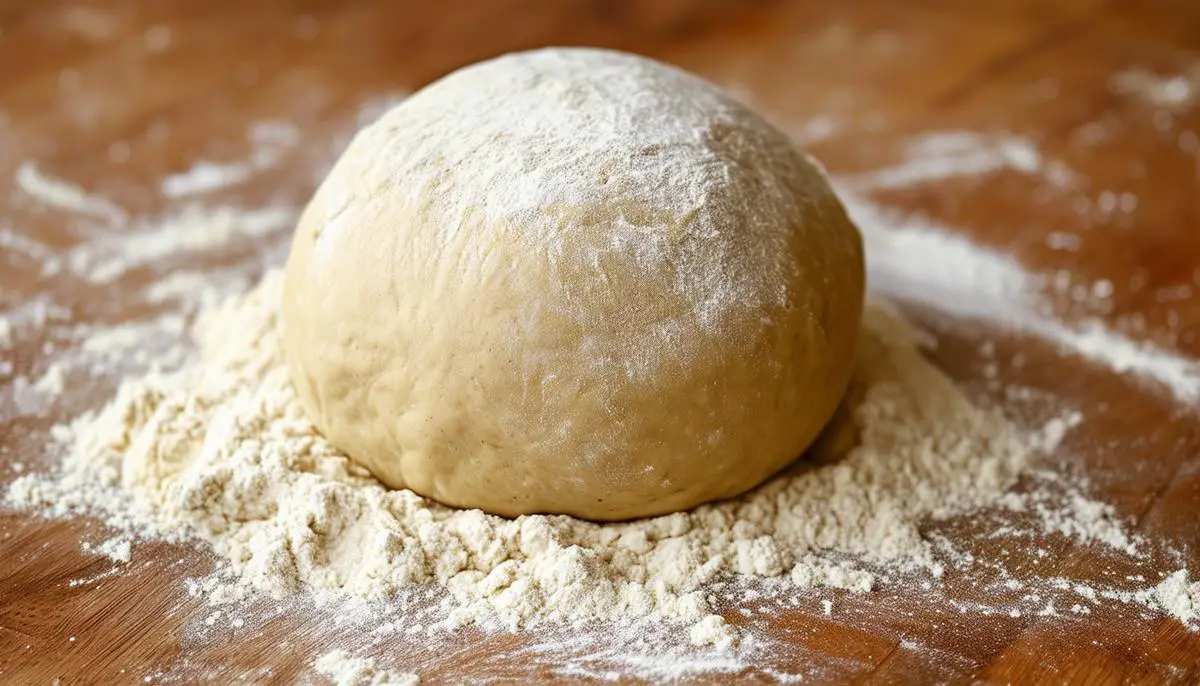
Versatility of Anadama Bread
Anadama bread's versatility is one of its most charming features. Its slightly sweet flavor and hearty texture make it perfect for a variety of culinary applications, easily fitting into different meals throughout the day.
Anadama bread can elevate a basic sandwich into something truly special. Its robust structure holds up well under a hearty load of fillings, making it an excellent choice for cold cuts, cheeses, and even more elaborate creations like a prosciutto, mozzarella, and roasted red pepper sandwich. One of our family favorites is a simple but delicious turkey and cranberry sauce sandwich, especially around the holidays. The sweetness of the cranberries complements the molasses in the bread beautifully.
For breakfast, this bread shines when toasted and slathered with butter. A sprinkle of cinnamon sugar on top adds an extra touch of warmth and sweetness—think French toast vibes without the extra fuss. It's also fantastic as the base for a more decadent breakfast, like avocado toast. Just mash up a ripe avocado, sprinkle with salt, pepper, and perhaps a dash of chili flakes, and spread it on a toasted slice of Anadama bread. The earthy molasses pairs surprisingly well with the rich creaminess of avocado.
For dipping into soups, Anadama bread is a game-changer. Its texture is perfect for soaking up broth without disintegrating, making each bite a delightful experience. Whether it's dunked into a hearty beef stew or a simple tomato soup, the bread's slightly gritty cornmeal texture provides an excellent contrast. One memorable meal involved a big bowl of clam chowder alongside thick slices of Anadama bread—the combination was pure comfort food heaven.
Another way to enjoy this bread is simply with a spread. Butter and honey make a match made in heaven for a simple snack or quick breakfast. For a more savory option, try it with a bit of whipped cream cheese and a drizzle of hot pepper jelly. The sweetness and heat balance out perfectly with the molasses undertones of the bread.
We've also experimented with turning leftover Anadama bread into croutons for salads. Just cube the bread, toss it with a bit of olive oil and your favorite herbs or spices, and toast in the oven until crispy. These croutons add a wonderful crunch and a slightly sweet undertone to any salad, making even the simplest greens feel gourmet.
And we can't forget about dessert. Anadama bread can be transformed into an indulgent bread pudding. Just substitute it for the usual white or brioche bread, layer it with custard, raisins, and perhaps a bit of dark chocolate, and bake until golden and bubbly. The molasses and cornmeal bring extra depth and texture to the dessert, making it a unique and memorable treat.
Anadama bread is truly a versatile staple that can be incorporated into a variety of dishes, enhancing the flavors and textures of your meals. Whether you're using it for breakfast, lunch, dinner, or even dessert, this New England classic proves to be a deliciously adaptable part of any kitchen repertoire.
Recipe for Anadama Bread
Ingredients:
- ½ cup stone-ground cornmeal
- 1 cup unsweetened alternative milk (we usually do oat or almond)
- 2 tablespoons vegan butter, plus 1 melted teaspoon for brushing on top
- 3 to 3 ¼ cups all-purpose flour
- 2 teaspoons salt
- 1 envelope – or 2 ¼ tsp – instant yeast
- 1/3 cup lukewarm warm water
- 5 tablespoons dark molasses
Instructions:
- Heat the Mixture: Grab a small saucepan and heat up the milk and 2 tablespoons of butter until it's just about ready to simmer. Whisk in the cornmeal and take it off the heat.
- Combine Dry Ingredients: You can do this by hand or use the hook attachment on a standing mixer. Mix together the flour, salt, and that lovely cornmeal mush you just made.
- Activate Yeast: Whisk the yeast into the lukewarm water and stir in the molasses.
- Mix the Dough: Pour the yeast/molasses mixture into the flour mixture. If you're using a standing mixer, start slow until the dough comes together, then crank it up to medium for about 10 minutes. If you're going old-school and working by hand, knead that dough like there's no tomorrow on a lightly floured surface for 5 minutes. Shape the dough into a nice, smooth ball.
- First Rise: Oil up a bowl and plop the dough in smooth-side-down, then flip it over. Cover with plastic wrap or a damp cloth. Let it rise somewhere warm for 60 to 90 minutes.
- Prepare for Rising: Give the dough a little knead and shape it into a loaf using the "winding the clock" method. Set the dough on the counter, start at one edge, and roll it up into a loaf-shaped coil. Put the dough into a greased bread pan and press it down to fill the space. Re-cover and let it rise while you boil some water and preheat the oven.
- Create Steamy Environment: Put a bread pan with about 2 cups of boiled water on a rack in the lowest position in the oven. Melt about a teaspoon of butter and brush it over the loaf. Sprinkle some cornmeal on top if you're feeling fancy.
- Bake: Bake at 350°F for 50 minutes. As soon as it's done, take the bread out of the pan and put it on a wire rack to cool.
Nutritional information per serving (12 servings per loaf):
Calories: 210
Total Fat: 3g
Saturated Fat: 1g
Cholesterol: 0mg
Sodium: 390mg
Total Carbohydrate: 42g
Dietary Fiber: 1g
Total Sugars: 9g
Protein: 5g
Vitamin D: 0mcg
Calcium: 44mg
Iron: 2mg
Potassium: 208mg
